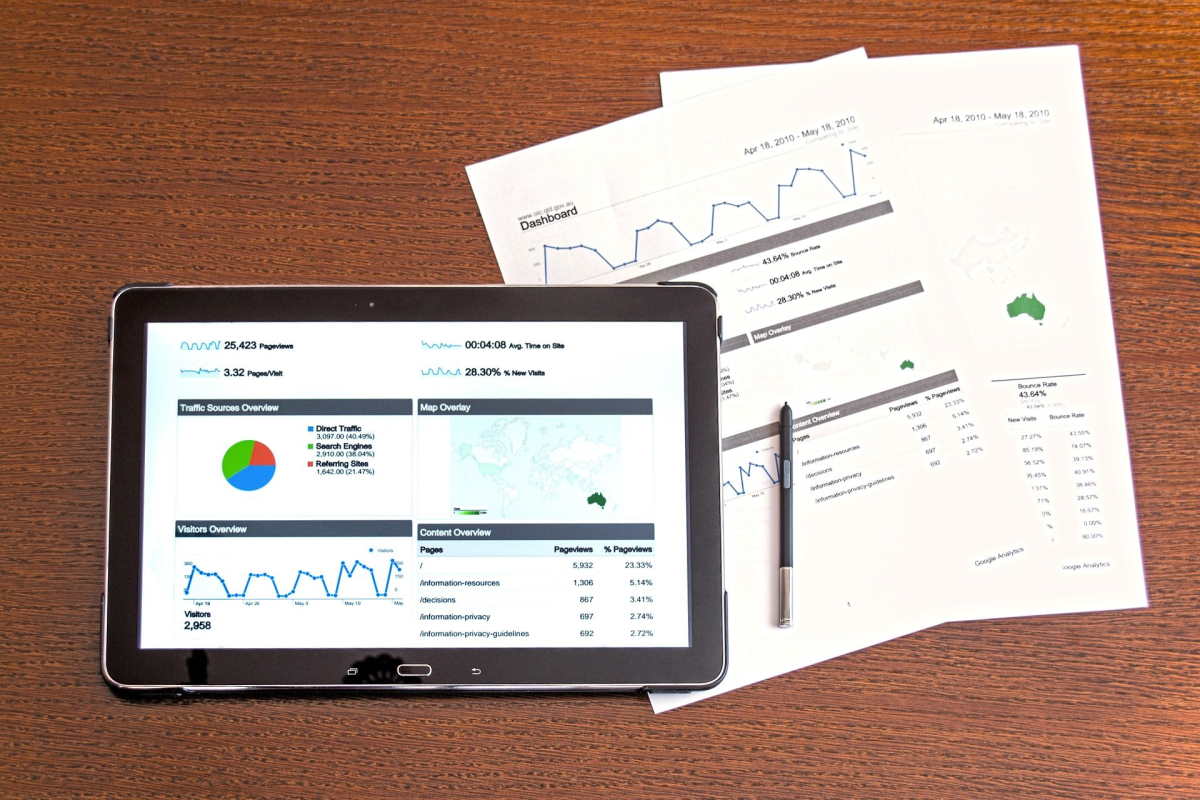Are you collecting data for the purpose of making better business decisions? No matter how much data you collect, you still need to process and build reports from what you collect.
Building reports has traditionally been a complicated process, but it’s easier today with SQL report builders like datapine. For instance, you can run reports quickly without relying on your IT team. You don’t even need to know SQL – the interface is user-friendly and simple.

If you’re not familiar with SQL reporting, keep reading to find out why it’s ideal for businesses.
What is SQL Reporting?
SQL reporting, also called SQL Server Reporting Services (SSRS) is a server-based reporting application that processes data stored in a database. Since SQL can be made user-friendly, SQL reports can be created by employees and managers with no technical experience.
SQL (Structured Query Language) is a data management language that makes it easy to access data stored in databases. It’s not a programming language like PHP or Python, but rather, it’s more like HTML (Hypertext Markup Language) as it’s designed to provide a simple solution.
What Kind of Reports Can Be Run With SQL?
SQL reports are highly agile. You can run any kind of report, including:
- Profitability reports
- KPI reports
- Management reports
- Expense reports
- Industry reports
- Labor-related reports
- Sales reports for special promotions
- And more
All you need to do is define a set of goals and SQL reporting software will do all the heavy lifting.
All of your reports are easy to export to various formats, including PDF, HTML, CSV, XML, and TIFF.
SQL Server Reporting Is Better Than Crystal Reports
Some people might remember Crystal Reports before it was phased out. While both reporting processes are similar, there are several differences. Before user-friendly interfaces were created, Crystal Reports were the simpler of the two options.
Now, SQL reports have actually surpassed Crystal Reports in terms of flexibility and features. Companies have made SQL reports more user-friendly while maintaining the ability to build complex reports. If you’re looking to enhance your database management, consider exploring options to convert Access to SQL Server.
Security for SSRS is more granular, which means you have more options to secure each folder. Security should always be a top priority.
The biggest difference is the price. If you want to run your own SQL reports, it’s free with a Microsoft SQL installation. However, Crystal Reports requires a paid license and you must pay for run times on every client.
While there are some diehard fans, Crystal Reports just don’t match up to SQL reporting. If you don’t make the switch, you’ll miss out on the ability to organize, sort, and personalize your data.
SSRS Can Be Used to Create a Reporting Portal
If you want to display your reports in various applications, that’s easy with SSRS. Say your goal is to provide employees with easy access to data. You can centralize your company data into just about any business application, including your company’s private network.
You can even display data in client reporting portals if you want to keep clients up-to-date with information pertaining to their project.

3 Tips for Making the Most Out of Your SQL Reports
Although SSRS is a wonderful way to process reports, the integrity of your reports will depend on the data you crunch.
Here are 3 quick tips to make the most out of your reports.
1. Only Collect Data You Know You Can Use
Don’t get overwhelmed with minutia. If you wanted to, you could collect an unlimited amount of data, but if you don’t have plans to use that data, it’s useless.
Collecting data you won’t use is a waste of time, company resources, and precious space in your database.
Before collecting specific pieces of data, create a plan for how you’ll use that data. Will it be part of your decision-making process? Will it affect the way you handle your sales calls? How will collecting that data factor into your business decisions?
If you’re not sure how you’ll use the data, consult with a third party to see if it’s necessary.
2. Make a List of All the Metrics That Drive Your Business Decisions
Rather than starting by collecting all data, start by making a list of metrics involved in your business decisions. Then, start collecting data related to those metrics.
3. Focus on the Metrics That Matter
Too many metrics is a sign that you’re unclear on your priorities. Focus on the metrics that matter most. It’s much easier to correlate data and make good decisions when you’re measuring fewer data points.
SQL Reporting Will Help You Make Better Decisions
Whether you’re new to SSRS or you’ve done some dabbling, you’ll be amazed at how much better your reports will be using this wonderful reporting tool.